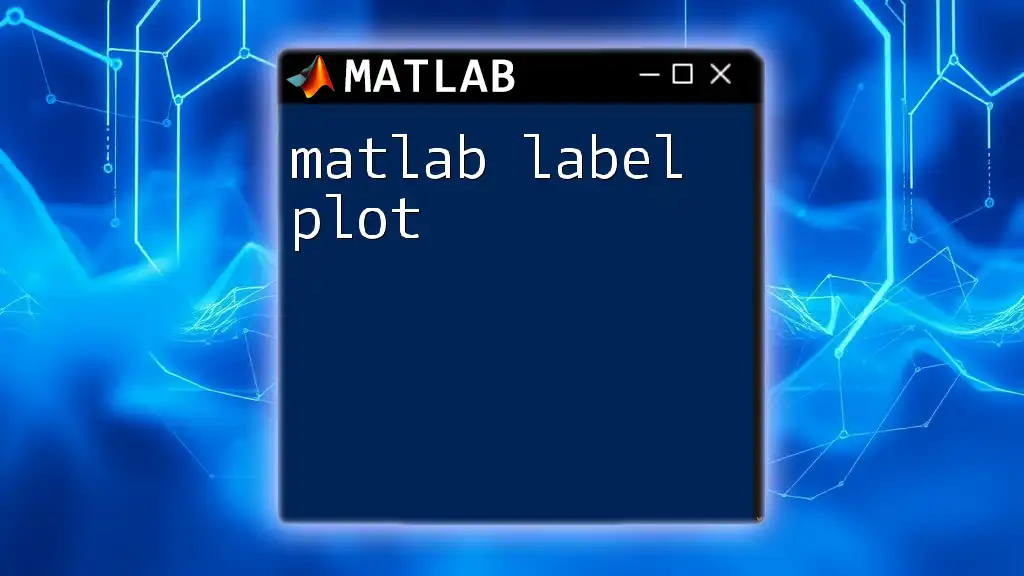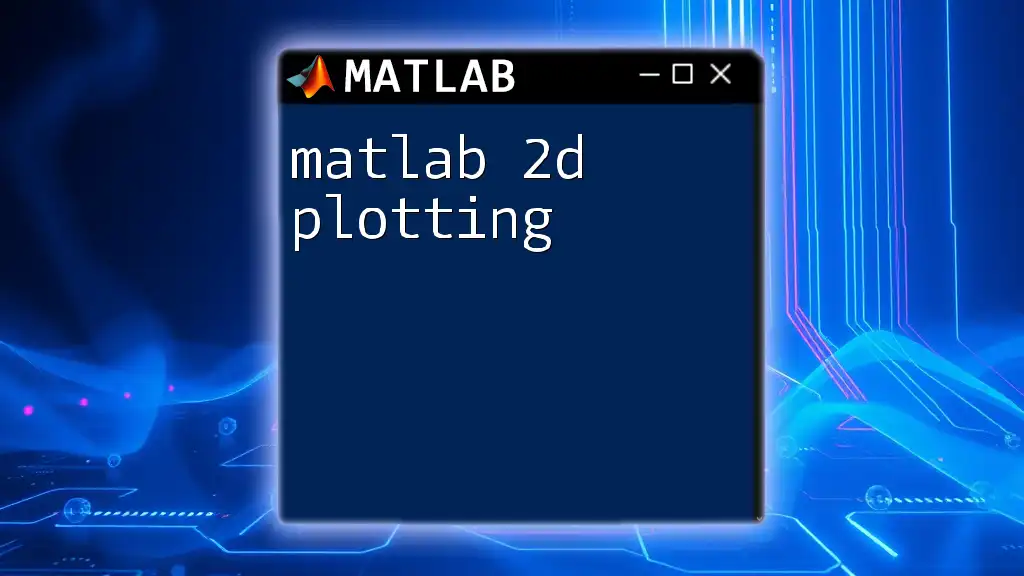An animated plot in MATLAB allows you to visualize data dynamically, providing a clear representation of how it changes over time; here's a simple example of creating an animated sine wave plot:
t = 0:0.01:10; % Time vector
for k = 1:length(t)
plot(t(1:k), sin(t(1:k))); % Plotting the sine wave up to current time
axis([0 10 -1 1]); % Setting the axis limits
pause(0.1); % Pausing for 0.1 seconds to create animation effect
end
Introduction to Animated Plots
Animated plots are powerful visualization tools that allow us to represent data dynamically, providing a more engaging way to observe how data changes over time. They are particularly useful in scenarios such as scientific visualization, where trends and behaviors of complex systems need to be understood at a glance.
The applications of matlab animated plots extend across various fields, including engineering, finance, education, and even entertainment. By effectively visualizing data, you can enhance your presentations, making them more informative and visually appealing.

Getting Started with MATLAB
Basic Setup
Before diving into animated plots, you will need to set up MATLAB. Begin by downloading and installing the software from the MathWorks website. Once installed, spend some time familiarizing yourself with the interface, particularly the workspace, command window, and script editor.
Understanding MATLAB Commands
Understanding MATLAB's command structure is crucial for creating effective animations. Focus on the following categories:
- Plotting functions (e.g., `plot`, `surf`, `scatter`)
- Control flow statements (e.g., `for`, `while`, `if`)
- Data manipulation functions (e.g., `meshgrid`, `linspace`)
These fundamental commands will form the basis for creating animated plots efficiently.

Creating Your First Animated Plot
Basic Animation Structure
Creating a basic animated plot in MATLAB involves incrementally updating a plot in a loop. This allows you to visualize changes in data dynamically.
Example: Sine Wave Animation
Here’s a simple example of creating an animated plot to display a sine wave:
t = 0:0.01:2*pi; % Time vector
y = sin(t); % Sine wave
figure;
for i = 1:length(t)
plot(t(1:i), y(1:i)); % Incrementally plot sine wave
axis([0 2*pi -1 1]); % Set axis limits
pause(0.05); % Pause for animation effect
end
This code snippet illustrates the basic concept: the sine wave is plotted incrementally, and the `pause` command controls how quickly the animation progresses.

Enhancing Animated Plots
Customizing Appearance
The visual aesthetics of your plot can significantly impact its clarity and effectiveness. Consider adding a title, axis labels, and legends to improve the comprehension of your animated plot.
Use commands like `title`, `xlabel`, and `legend` to give context to your animations. For example:
title('Animated Sine Wave');
xlabel('Time (s)');
ylabel('Amplitude');
legend('sin(t)', 'Location', 'BestOutside');
Adding Grid Lines and Backgrounds
Including grid lines can assist viewers in interpreting the data more easily. To add grid lines, simply use the command:
grid on; % Adding grid
This small addition can enhance the readability of your plot significantly.

Advanced Techniques for Animated Plots
Animating Multiple Data Lines
Animating multiple data series can create a more dynamic and informative plot. The following code demonstrates how to plot multiple sine waves at once:
t = 0:0.01:2*pi;
figure;
hold on; % Hold on to current plot
for i = 1:10
y = sin(t + i * pi/5); % Shifted sine waves
plot(t, y);
end
hold off;
Using `hold on` allows multiple lines to be displayed in the same figure without erasing the previous plots.

Utilizing MATLAB's Built-in Functions for Animation
Using `fill` for Animated Shapes
The `fill` command can create animated shapes that visualize areas under curves or highlight specific regions in your plot. A simple example is shown below:
x = [1 2 3];
y = [1 2 1];
fill(x, y, 'r'); % Fill with color
This command creates a filled polygon, which you can animate further by updating its coordinates in a loop.
Using `surf` for Surface Animation
For three-dimensional visualizations, the `surf` function can create captivating surface animations. Here’s an example:
[X,Y] = meshgrid(-5:0.1:5, -5:0.1:5);
for z = 0:0.2:1
surf(X, Y, sin(sqrt(X.^2 + Y.^2) + z));
pause(0.1); % Control speed of animation
end
This snippet demonstrates how to animate a surface plot, revealing how the surface changes over time.

Exporting Your Animated Plots
Saving as Video Files
Once you’ve created an animated plot, you may want to share it or include it in presentations. MATLAB allows you to record your animations in video format using the `VideoWriter` function. Here's how:
writerObj = VideoWriter('sineWaveAnimation.avi');
open(writerObj);
% Incorporate your plot loop here
writeVideo(writerObj, getframe(gcf));
close(writerObj);
This code initializes a video object, opens it for writing, captures frames during your plotting loop, and then closes the video file.
Generating GIFs from Animations
Creating a GIF is another way to share animated plots. You can utilize the `imwrite` function to compile frames into a GIF file. This process usually involves capturing individual frames and then constructing the GIF.

Troubleshooting Common Issues
Performance Problems
One common issue with animated plots is frame rate lag. To improve performance, consider optimizing your plotting commands or reducing the number of points being plotted in each frame. Efficient coding practices can significantly enhance the fluidity of your animations.
Plotting Errors
Another frequent issue is mismatched dimensions in your plot commands. Always ensure that the dimensions of your data arrays match; otherwise, MATLAB will return errors. For instance:
% Ensure matrix dimensions match
if length(x) ~= length(y)
error('X and Y must be the same length.');
end

Conclusion
In summary, MATLAB animated plots offer an excellent way to visualize dynamic data and trends. The ability to create, customize, and enhance animations helps communicate complex information effectively. As you practice and experiment with various techniques, you can create compelling visualizations that captivate your audience.

Call to Action
Join our MATLAB learning community to deepen your understanding of dynamic visualizations. By participating in our classes and discussions, you will improve your skills and confidence in coding with MATLAB. Share your animations with us—we're excited to see what you create!
Bonus Section
FAQs about Animated Plots in MATLAB
What are the limitations of animated plots?
Animated plots can become complex with large datasets, potentially leading to performance issues. It’s essential to balance detail and animation smoothness.
Resources for Further Learning
Explore additional resources, such as books and online courses dedicated to MATLAB, to continue enhancing your skills in data visualization. Look for tutorials that specifically focus on aspects of animation to further your proficiency.

















